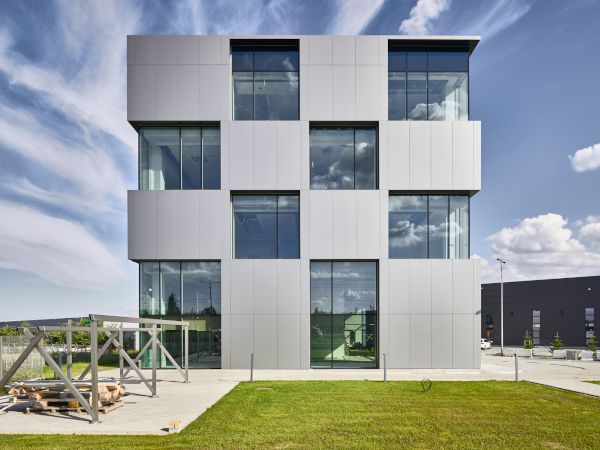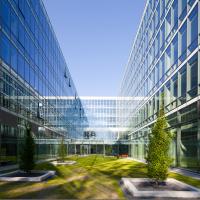Date: 15 July 2010
However, very few solar modules can make do without reliable and lasting protection from external influences, particularly when attached to façades. Polyvinyl butyral (PVB), a film that has been better known until now for its use in laminated safety glass, is now attracting attention.
The market segment for solar modules integrated in façades or used as solar glass roof elements is steadily growing. Its market share is currently at less than 1 per cent of module installations, as many systems are still very costly and building connection technology is still underdeveloped and not sufficiently standardized.
On PV modules, the solar cells have to be protected from external influences. Encapsulation consisting of transparent plastics is making a huge contribution here to the durability of photovoltaic modules and to long-term power generation from sunlight. This applies particularly to building façades. With BIPV systems, it is not only possible to generate electricity and reduce CO2, but also to (at least partly) refinance the façade by feeding the electricity into the grid.
These building-integrated PV systems are becoming increasingly attractive and efficient. They represent a good combination of efficient surface use and aesthetics. A big help here has been the further development of PV modules making use of thin-film technology. Of great importance here is polyvinyl butyral (PVB), a film that has so far been better known for its use in laminated safety glass. A fine example is the New York Stillwell Avenue subway station, which has the world’s largest integrated PV installation with thin-film modules, equipped with TROSIFOL PVB films.
The first manufacturer worldwide to develop a special PVB film for use in solar modules was Kuraray Europe GmbH under the brand name of TROSIFOL, as the company reports.
Since the beginning of the Eighties, solar modules with TROSIFOL PVB films have been undergoing successful outdoor weathering tests on module test stands of Berlin’s Photovoltaic Institute and the Fraunhofer ISE in Freiburg, among others. Designed for all conventional PV module production processes, Kuraray introduced at the end of 2009 a second and technically improved generation of films that supplements the current range of films in special fields of application.
Trend towards PVB
Since 2005, there have been moves in the PV and glass industry to introduce PVB film as the encapsulation material of double-glazing elements with integrated solar cells. The aim is to significantly improve the safety standards of laminated module glass of building-integrated photovoltaics (BIPV).
Furthermore, thin-film solar modules comprising two panes of glass with a PVB interlayer can be inexpensively produced with the two-stage lamination process familiar from laminated safety glass.
With the now appreciable and steadily growing demand for thin-film solar modules – forecasts anticipate 40 per cent of total module output by 2020 – the use of PVB film will continue to increase and claim a growing share of the market.
The reasons for the low market shares of other plastics include the lack of experience with these products in the solar industry, their in some cases inferior technical properties and their excessively high cost. In addition, these materials have to reliably demonstrate a service life of 20 to 25 years in solar modules.
High safety standards
Building-integrated photovoltaics, particularly in Europe, are subject to the same high safety standards as all other glazing on façades and in overhead glazing applications.
For overhead applications in Germany, the list of standards and specifications for the construction industry calls for an interlayer of PVB. When these elements are replaced with solar modules, these standards and specifications remain unchanged. This means that EVA and other plastics in PV modules have to overcome a number of regulatory hurdles in such applications. For building-integrated photovoltaics, experts are expecting strong growth in commercial use over the next ten years.
















Add new comment